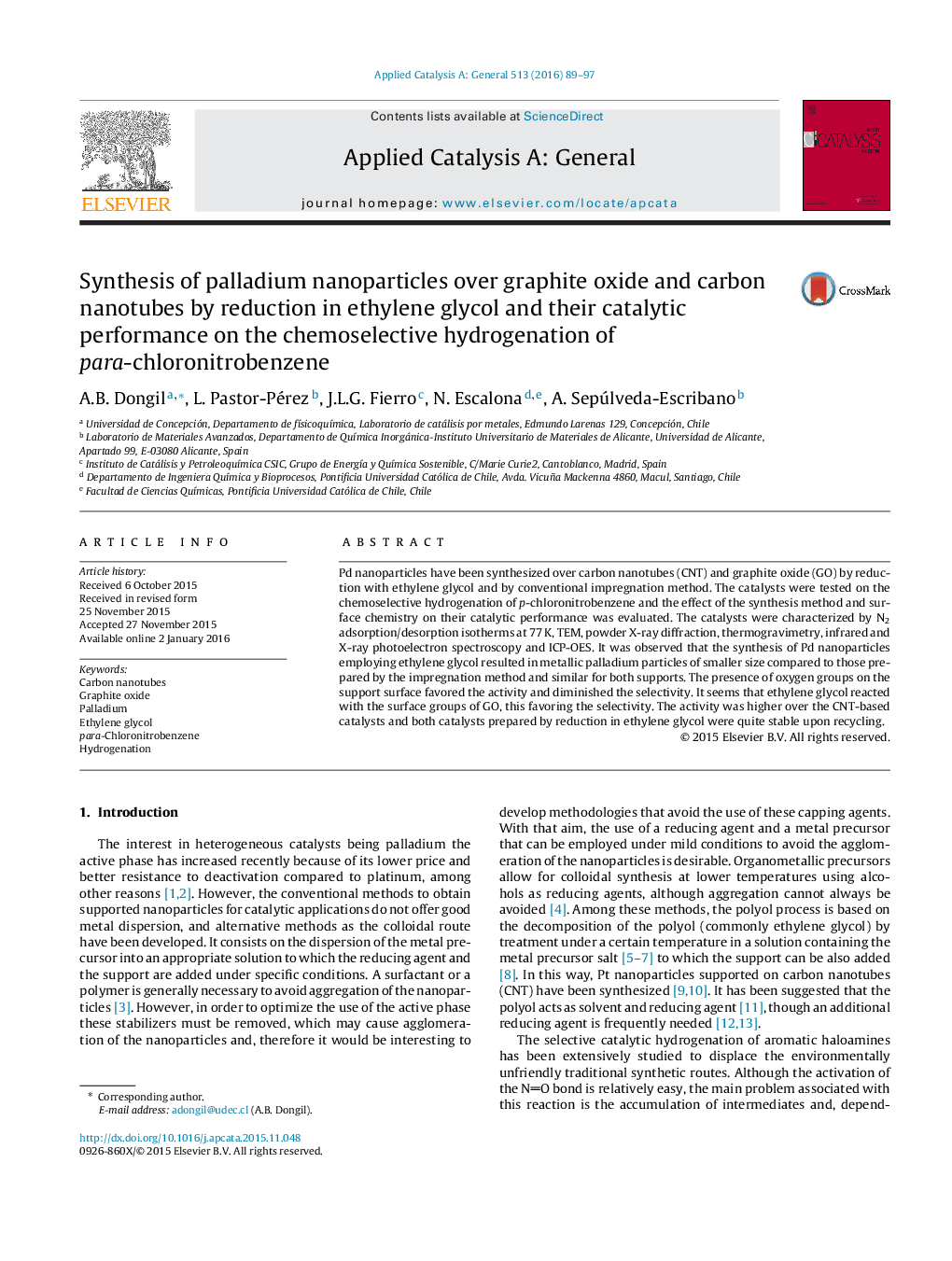| کد مقاله | کد نشریه | سال انتشار | مقاله انگلیسی | نسخه تمام متن |
|---|---|---|---|---|
| 38848 | 45793 | 2016 | 9 صفحه PDF | دانلود رایگان |
• It was studied the synthesis of palladium nanoparticles by reduction of Pd (acac)2 with ethylene glycol over carbon nanotubes and graphite oxide.
• Well-dispersed metallic palladium nanoparticles of similar average size were obtained over Pd/CNTEG and Pd/GOEG.
• The morphology and surface chemistry do not seem to affect the size of the nanoparticles obtained by this methodology.
• Pd/CNTEG and Pd/GOEG were studied on the para-chloronitrobenzene hydrogenation and compared with catalysts prepared by impregnation.
• The catalysts Pd/CNTEG and Pd/GOEG were more active than the catalysts prepared by impregnation and they could be reused on successive cycles.
Pd nanoparticles have been synthesized over carbon nanotubes (CNT) and graphite oxide (GO) by reduction with ethylene glycol and by conventional impregnation method. The catalysts were tested on the chemoselective hydrogenation of p-chloronitrobenzene and the effect of the synthesis method and surface chemistry on their catalytic performance was evaluated. The catalysts were characterized by N2 adsorption/desorption isotherms at 77 K, TEM, powder X-ray diffraction, thermogravimetry, infrared and X-ray photoelectron spectroscopy and ICP-OES. It was observed that the synthesis of Pd nanoparticles employing ethylene glycol resulted in metallic palladium particles of smaller size compared to those prepared by the impregnation method and similar for both supports. The presence of oxygen groups on the support surface favored the activity and diminished the selectivity. It seems that ethylene glycol reacted with the surface groups of GO, this favoring the selectivity. The activity was higher over the CNT-based catalysts and both catalysts prepared by reduction in ethylene glycol were quite stable upon recycling.
Figure optionsDownload high-quality image (79 K)Download as PowerPoint slide
Journal: Applied Catalysis A: General - Volume 513, 5 March 2016, Pages 89–97
